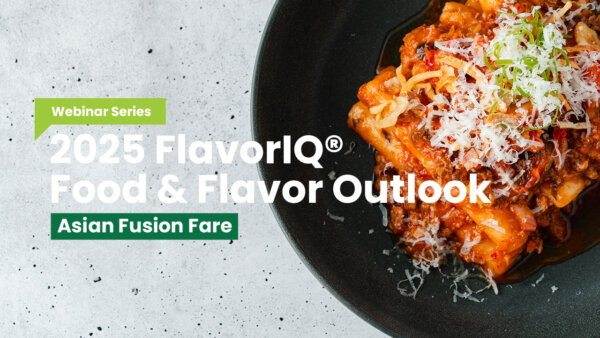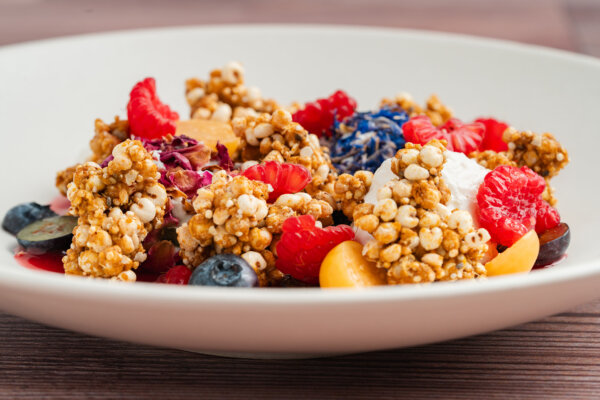
Before joining Griffith Foods as culinary director India in 2019, Chef Nitin Puri built an illustrious career as an innovative development chef with companies including Hindustan Unilever, Dr. Oetker, Godfrey Phillips and Khana Khazana. In this article, Nitin shares his insights, as a longtime Indian chef, on a growing trend of innovative dishes and sauces featuring fiber- and protein-rich beans, chickpeas, lentils, lupins and peas.
A long and growing story
Beans, peas, lentils and chickpeas have been central to Indian cuisine since ancient times. Along with vegetables, fruits and milk, legumes remain a key component of the daily diet of India’s vegetarians and flexitarians.
Around the world, more people are embracing a flexitarian diet driven by increased health consciousness, food security concerns, environmental mindfulness and animal welfare. As part of this broader trend, legume consumption has grown globally in recent years and will only expand further in the future.
Legumes offer robust and healthy utility across tried-and-true uses in soups, salads and hummus as well as emerging uses in dried snacks, wheat-free flours and thickening agents. And we will see wider use of ingredients like aquafaba—the liquid left over from cooking chickpeas—which can serve as a dairy and egg white substitute in savory and sweet applications, from tzatziki and aioli to meringue and frosting.
Current legume trends
The global food industry has recognized the growing popularity of legumes, and we’re seeing more companies, restaurants and chefs working to create more enticing, delicious and healthy dishes with beans and peas.
While the COVID-19 pandemic has increased the attractiveness of legumes with consumers, there has been a growing awareness over the past decade of the environmental impact of meat production and consumption. I think this mindset will strengthen in years to come. As meat substitutes grow in popularity, legume consumption will rise significantly. Chickpeas in particular, will be more widely used as meat alternatives and in other ways, given their ready adaptability across the food industry.
Right now, we’re seeing many quick-serve restaurants introducing plant-based burgers. Vegan meatballs are poised to grow rapidly in the next year. Processors, meanwhile, are expanding their offerings to provide more mock-meat choices to restaurants and retail stores.
A broad trend across industry segments
Big picture, legumes are an excellent meat replacement and source of vegetarian protein. Their high protein content and slow energy release make beans uniquely attractive to kitchens and food companies focused on health and nutrition.
The growth of meatless, protein-rich cuisine is being driven by many stakeholders. Consumers are fueling demand, processors are developing more plant-based products, retailers are devoting more shelf space, and restaurants are creating more delicious dishes and applications.
In India, this trend is already impacting all segments of the food business. In 2020, for example, we’ve seen tremendous growth of savory snack mixes, partly driven by more people staying at home and snacking during the pandemic. Both larger players and local Indian companies have benefited, introducing innovative new flavors and regional variations. And similar snacks are growing across the Middle East and beyond.
Quick tips and future outlook
Overnight soaking is an easy way to prepare legumes for various recipes and dishes. Soaked legumes can be ground into paste for delicious vegan pancakes loaded with protein and nutrition. They can also be combined with other ingredients to make a variety of other breakfast dishes popular in India.
Years ago, I was inspired by India’s stuffed snacks category to develop cooked black peas as a savory, protein-rich filling for croissants. People really embraced this approach to enhancing bread, which has a long history in France and around the world.
Beyond breakfast, legumes can be incorporated easily into various cuisines as a meat replacement, salad component and main course. And beans and peas can be used to make vegan super-flour for use in breads, dishes, sauces and more. The adaptability is truly limitless.
In addition to meat-less burgers and vegan meatballs, I think we’ll soon see legumes used widely in tacos, burritos, salads and other dishes traditionally made with meat. Building on current Indian snack trends, we’ll see more bar snacks and tapas made from dried or rehydrated beans combined with herbs, spices and fresh ingredients.
Based on my experience, I think chefs and home cooks have a growing opportunity to create more healthy and nutritious dishes with legumes for breakfast, other meals and snack occasions. As a flexible and accessible low-fat source of important nutrients, legumes can readily be incorporated into soups, salads, sauces and dips.
While legumes have a long history in India and other markets, they have a bright future in all corners of the globe, as more people embrace beans, peas and lentils as low-fat, protein-rich, healthy and delicious food ingredients.



